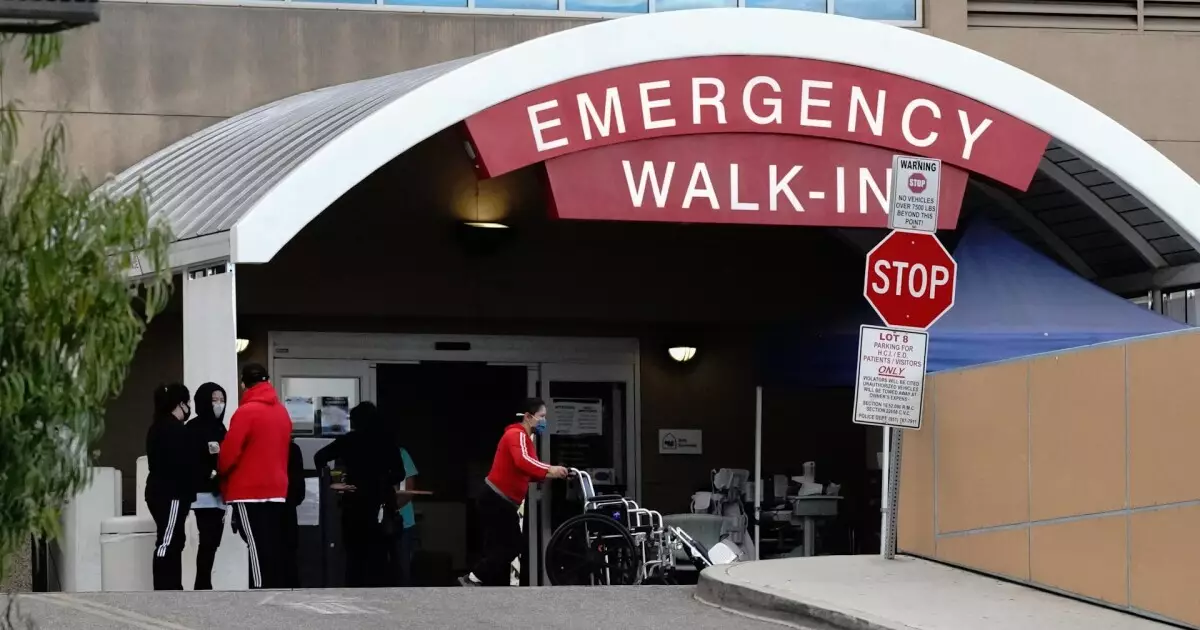The political landscape on the West Coast, particularly in Washington, Oregon, and California, is grappling with some profound fiscal challenges as they stare down a projected $12 billion deficit by fiscal 2026. Despite avowedly progressive policies, Democratic leaders find themselves in a perilous position, confronted with the grim realities of diminished revenue projections. California Governor Gavin Newsom’s neologism, “Trump slump,” encapsulates this dramatic turn of events, marking a significant retreat from the modest $363 million surplus forecasted at the beginning of the year. This isn’t merely a statistical oversight—it’s a betraying signal that the fiscal management strategies employed by these states are under unprecedented stress.
In stark contrast to the optimistic predictions primarily rooted in an expanding economy, the very foundation of these projections has been cracked open by external federal economic policies that many Democrats had once dismissed. The ongoing ramifications of tariff taxes and slashed federal funding seem to hit hardest in these states, which, despite their wealth and resources, are hinging too much on an economic boon that may no longer be sustainable.
A Cautionary Tale: Economic Dependence on Federal Funds
What’s particularly alarming is the degree to which these states rely on federal revenue—an estimated 30% to 60% of their budgets. Whether it is Medicaid or other federal grants, these financial lifelines contribute significantly to their operational capacity. As analysts highlight, proposed cuts in federal funding, particularly with looming legislation aimed at reducing Medicaid reimbursements, could spiral these states into deeper fiscal distress. The consequences could be devastating—not just for the state coffers but also for the vulnerable populations that these programs serve.
Newsom’s proposition of freezing Medi-Cal expansion for undocumented immigrants is indicative of how desperate times call for desperate measures. Instead of embracing inclusivity and broadening coverage, the focus has shifted towards cutting costs at the expense of California’s progressive values. To sell such a harsh menu of choices to constituents is a testament to the dire straits in which California finds itself, showing that even the most liberal administrations are not immune to the demands of budgetary realism.
Penny-Pinching: A Reflection of Wider Political Failures
As the budget process unfolds, it’s shocking to witness a landscape populated by not only cutbacks but outright eliminations of key bills aimed at enhancing social services and infrastructure. Lawmakers from both chambers are stripping initiatives like housing and healthcare benefits—decisions made in the “suspense file” procedure—reveal a systematic retreat from forward-thinking projects that should, ideally, be part of a broader strategy for long-term economic health.
The sharp ax of budget cuts should raise eyebrows. While responsible budgeting is essential, the cavalier cutting of upwards of 30% of proposed measures indicates that the political elite may be too reactive rather than proactive. With leaders like Assembly Appropriations Chair Buffy Wicks lamenting the inevitable cutting of “good bills,” it suggests a lost opportunity to innovate through times of hardship. The absence of visionary solutions in favor of near-term fiscal tightrope walking does not inspire confidence among constituents looking for robust and meaningful governance.
Unpacking the ‘Balanced Approach’: Political Spin vs. Reality
Governor Bob Ferguson’s recent passage of a $78 billion budget—laden with tax increases and agency cuts—boasts the hollow rhetoric of “balance.” While higher school funding might appease parents and educators, the real strengthening of state infrastructure appears dangerously tied to an ever-increasing gas tax. This, rather than a forward-thinking policy initiative, seems more a short-term fix to sustain inadequate funding formulas amidst deepening deficits.
Moreover, the applause for spending on transportation projects like the Interstate 5 bridge speaks to a deep-rooted conflict. While infrastructure is crucial for economic activity, it’s equally critical that these projects are assessed against current fiscal realities. Can the state genuinely afford new construction while cutting essential services? Such political puffery serves only to cloak the uncomfortable truth—that our leaders are balancing on a tightrope with looming financial repercussions just below.
The Bottom Line: A Future Imperiled by Short-Sighted Policies
As all three states face this $12 billion deficit, it serves as a harsh reminder of the balancing act required in governance. The burdens of economic shifts should compel state leaders to recalibrate their approach—both fiscally and ethically. Instead of dwelling solely on revenue projections driven by unreliable federal support, it’s crucial to explore new avenues of revenue generation and prudent spending.
In the face of looming tax increases and service reductions, this budget season should ideally steer discussions toward accountability, sustainability, and, above all, an earnest recalibration of how these states define their progressive values in an ever-changing economic landscape. The onus is on the leadership in these regions to pivot from a reactive stance toward a genuinely proactive and resilient fiscal strategy that prioritizes the well-being of all residents—good intentions will not suffice when the financial ground is shifting beneath us.

